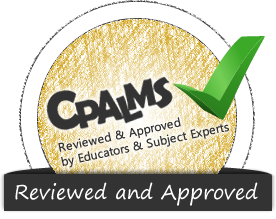Please sign in to access this resource
Not a Florida public school educator?
Access this resourceon CPALMS.com
General Information
Freely Available: Yes
Aligned Standards
This vetted resource aligns to concepts or skills in these benchmarks.5 Lesson Plans
In this lesson, students analyze primary source documents in an effort to answer the central historical question: Who was primarily responsible for the Cold War: the United States or the Soviet Union? The teacher begins with a timeline and brief PowerPoint to set up early Cold War chronology. Students then receive 2 documents-Churchill's "Iron Curtain" speech and the "Truman Doctrine" speech-answer guiding questions and formulating an initial (probably pro-American) hypothesis. They then corroborate this with another 2 documents-a telegram by Soviet ambassador Novikov and a critical speech by Henry Wallace-and formulate another (perhaps more sympathetic to the Soviet position) hypothesis. Students share answers and discuss as a class: which hypothesis is more believable? What further evidence would you like to see?
In this lesson, students analyze primary source documents in an effort to answer the central historical question: Why did the Russians pull their missiles out of Cuba? The teacher begins by recapping the Cold War and the presence of missiles in Cuba and streams a video clip from Discovery Education about the Crisis and the negotiations that ended it. *Please see note in reviewer public remark below about this video. Students then analyze, in pairs, 3 documents: 1) a letter from Chairman Khrushchev to President Kennedy, 2) a letter from Kennedy to Khrushchev, and 3) a cable from Soviet ambassador Dobrynin to his foreign ministry. For each, they answer guiding questions. A final class discussion addresses the documents: What kind of a deal was struck? Why was it secret? Does the class textbook mention it?
In this lesson, students analyze primary and secondary source documents in an effort to answer the central historical question: How and why did the U.S. fight the Cold War in Guatemala? The teacher begins by explaining how covert actions were part of the Cold War. Students read 2 brief accounts of the CIA takeover from recent textbooks. Students answer questions in pairs. Class discussion: Why does each textbook include details the other leaves out? Students then read a declassified CIA document-an assassination list with names deleted-and discuss: how does this document challenge the textbook accounts? A final class discussion attempts to place this incident in the larger context of what students have learned about the Cold War.
In this lesson, students analyze secondary source documents in an effort to answer the central historical question: Who started the Korean War? The teacher begins by first explaining that textbooks can be biased sources and then uses a brief PowerPoint to show the geography of Korea and why/when war began there. Students then form pairs and read 2 accounts of the war: one from a South Korean textbook and another from a North Korean book. For both, students not only summarize and answer questions, but they must identify which source is which (North or South Korea?) and use textual details to prove it. In a class discussion, students share their answers. If time remains, the class may corroborate these sources with their own class textbook.
In this lesson, students analyze primary source documents in an effort to answer the central historical question: How did Americans respond to President Truman's decision to fire General MacArthur? The teacher begins by explaining how MacArthur wanted to invade China to resolve the Korean War stalemate in 1951 and why Truman fired him for insubordination. Students are asked to make a prediction: what do you think the reaction was to the firing of this popular general? Students then analyze 3 documents: 1) a memo to Truman tabulating the letters he received after the firing (pro vs. con), 2) a letter by AMVETS supporting the firing, and 3) a very critical letter from a woman in Texas. For the last 2, students answer questions on a graphic organizer in groups. A whole group discussion follows and a quick debriefing on the impacts of the war's conclusion are presented.
![Cpalms [Logo]](/images/cpalms_color.png)






 Open Resource Page
Open Resource Page


